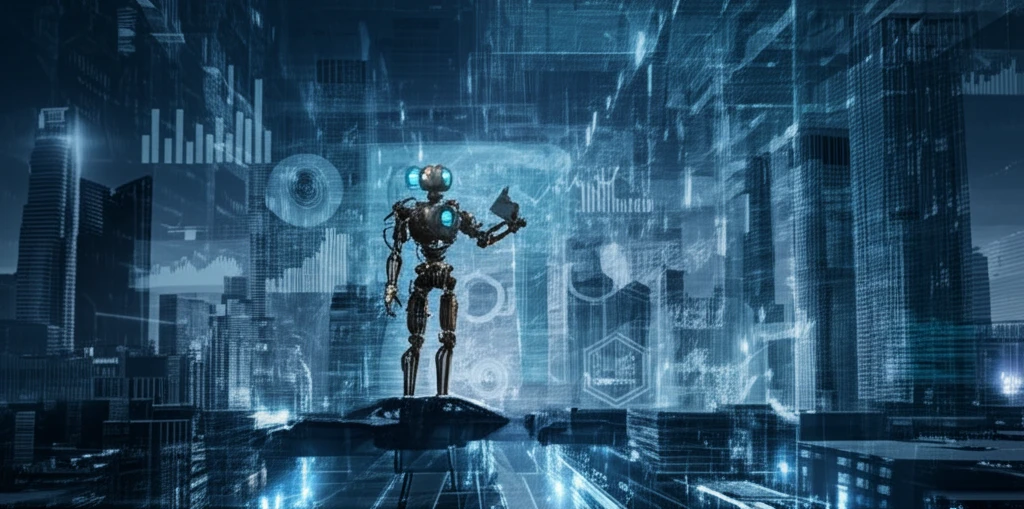
Can AI Fix the Economy? How Reinforcement Learning Could Reshape Our Financial Future
"Explore how AI, specifically reinforcement learning, is revolutionizing economics, offering new ways to model and potentially stabilize our complex financial systems."
For decades, economists have relied on traditional models to understand and predict economic behavior. These models, while valuable, often make simplifying assumptions that don't fully capture the complexities of the real world. Think of it like using a basic map to navigate a sprawling city – it might get you started, but it won't show you the intricate network of streets and alleys.
Agent-Based Models (ABMs) emerged as a powerful alternative, simulating economies from the bottom up by modeling individual economic agents and their interactions. However, these ABMs often rely on pre-programmed behaviors, limiting the adaptability and 'rationality' of the agents. What if we could create economic agents that learn and adapt in real-time, just like in the real world? That's where Artificial Intelligence (AI) and reinforcement learning (RL) come into play.
A groundbreaking study introduces a new framework that uses multi-agent reinforcement learning to enhance ABMs. This approach allows agents within the model to learn and optimize their strategies based on environmental interactions, potentially leading to more realistic and robust economic simulations. Let’s dive into how this innovative approach could reshape our understanding of economics and pave the way for a more stable financial future.
What is Reinforcement Learning and How Can It Improve Economic Models?

Reinforcement Learning (RL) is a type of AI where agents learn to make decisions by interacting with an environment to maximize a reward. Imagine teaching a dog new tricks – you reward the dog for performing the correct action, and over time, the dog learns to associate the action with the reward. RL works similarly, but with algorithms.
- Enhanced Realism: RL allows economic models to incorporate more realistic behaviors, as agents can learn and adapt in response to market dynamics.
- Optimized Strategies: RL agents can discover strategies that outperform pre-programmed rules, potentially leading to more efficient market outcomes.
- Dynamic Adaptation: RL agents can adjust their strategies in real-time, allowing models to capture the ever-changing nature of the economy.
The Future of AI in Economic Modeling: A More Stable and Understandable Financial World?
The integration of AI, particularly reinforcement learning, into economic modeling represents a significant step forward in our ability to understand and potentially manage complex financial systems. As AI continues to evolve, we can expect even more sophisticated and realistic economic simulations, paving the way for a more stable and understandable financial world. While challenges remain, the potential benefits of this approach are enormous, offering hope for a future where economic policies are more effective and financial crises are less frequent.
